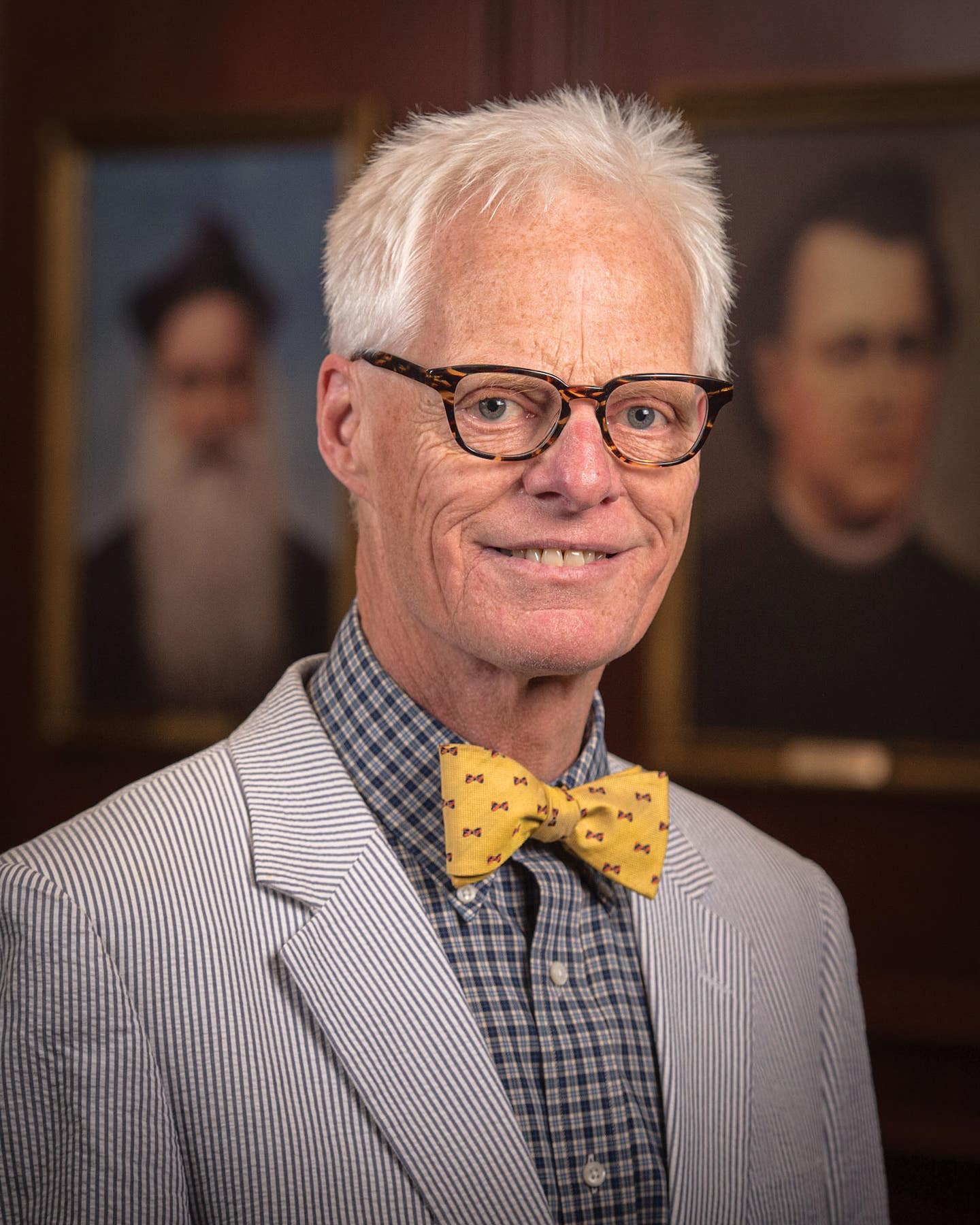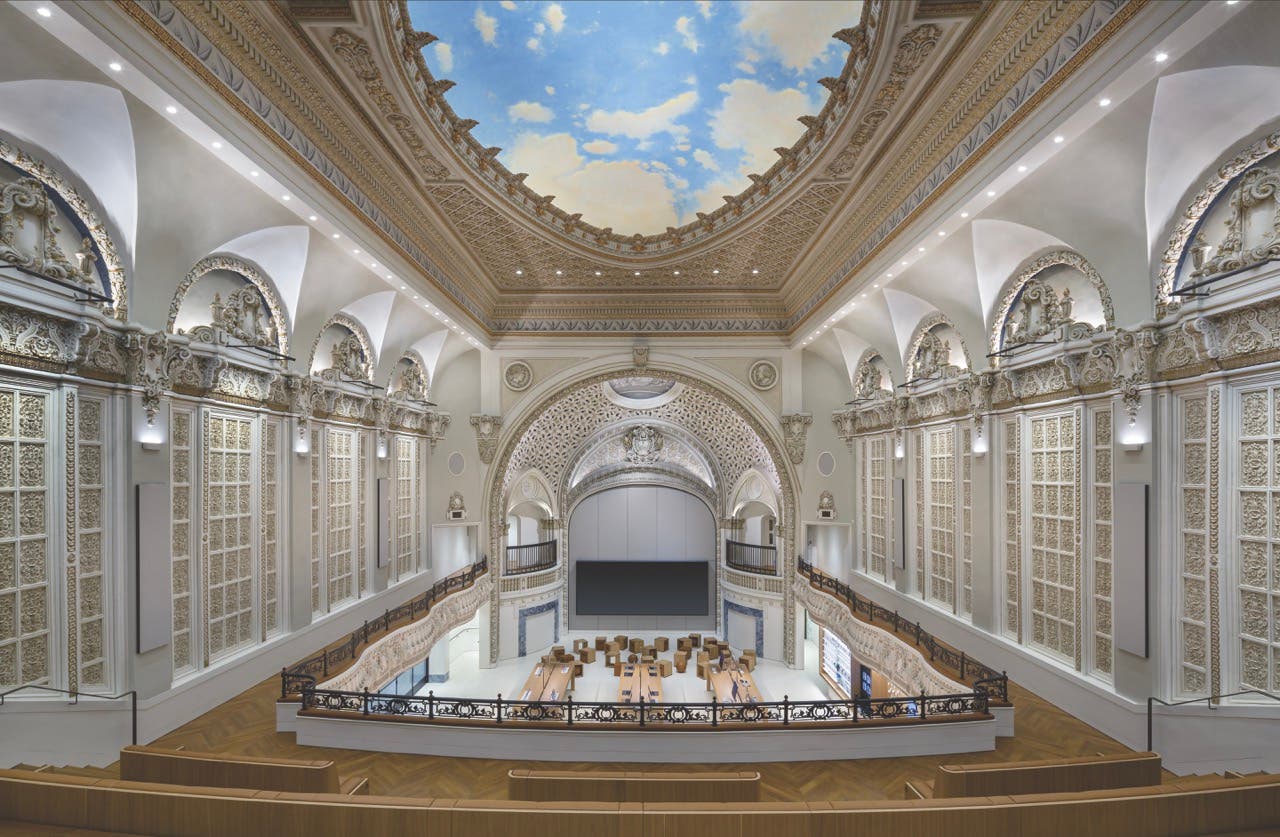
Palladio Awards 2021
Honoring Thomas Gordon Smith
The pathbreaking classical architect and educator Thomas Gordon Smith passed away in June at age 73 in South Bend, Indiana. That is where he accomplished his life’s major achievement, the coup d’etat at the School of Architecture at the University of Notre Dame. Smith was known for his mild manners and engaging personality, so it remains a mystery to many admirers who were not there for the revolution in 1989-90 how he managed to brave the academic quagmire and convert the school from its standard-issue modernist curriculum to a thoroughgoing classical curriculum in such a short period of time.
Smith won an Arthur Ross Award from the Institute for Classical Architecture & Art in 2017 for his work in the field. This year’s Traditional Building Clem Labine Award was bestowed on Smith for his quest for a more humane and beautiful built environment.
According to a 2001 monograph by Professor Richard John, of the University of Miami—whose book has provided me with much material for this article—when Smith was offered the chairmanship of Notre Dame’s architecture school, there were only two programs in the world of a similar dedication to classicism: at the Russian Academy of Fine Arts, in St. Petersburg, and at the Prince of Wales’s Institute of Architecture, in London.
Possible explanations for this mystery arise from the study of Smith’s career in architectural practice and pedagogy since graduating from the painting program at the University of California at Berkeley in 1970. That year he wedded Marika Wilson, who guided her husband throughout their marriage of fifty years. A photograph of the two newlyweds dancing seems to reflect a quiet passion of the sort that Smith brought to the queen of the arts from an early age.
As a teenager growing up in the Berkeley suburb of El Cerrito, according to Richard John, Smith visited in 1962 the nearby Temple of the Wings, an arrangement of 34 giant Corinthian columns, with tarps serving as walls and roof. This “house” was designed in 1911 by Florence Treadwell Boynton, an acolyte of dancer Isadora Duncan, with the help of Bernard Maybeck, the eclectic California architect. John wrote: “Seeing this bizarre house and learning of its romantic associations inspired Smith at the age of fourteen to become an architect.”
During Smith’s belated honeymoon of seven months in 1971, he met Paolo Portoghesi, who as a student lost confidence in his tutors and took the Renaissance architect Francesco Borromini as his “mentor,” resulting in a strong Baroque influence in his generally modernist oeuvre. “This type of apprenticeship, to long-dead masters rather than to living practitioners,” wrote John, “was to prove a fruitful model for Smith in his own development as an architect.” Smith’s embrace of the Roman classicist Vitruvius—whose treatise remains the sole architectural document recovered from ancient times—partook of the same spirit.
While in Europe, Smith applied to graduate school at Princeton, which rejected him, but in the process, he met Michael Graves, who encouraged him to apply for the following year, by which time he had returned to Berkeley to teach. Smith taught there and, over the next decade, at the College of Marina, SCI-ARC (in Santa Monica), UCLA, Yale, and the University of Illinois (Chicago). He seems to have been adept at making academic and professional connections. These included not only Graves but influential thinkers and practitioners such as Charles Moore, Charles Jencks, David Watkin, Stanley Tigerman, Alan Greenberg, Leon Krier, and Robert A.M. Stern. His work consisted largely of houses in the then briefly ascendant postmodernist mode, but with a striking admixture of non-ironic classical proportions, detailing, and iconographic decoration.
Back in Italy with the Rome Prize, a fellowship at the American Academy, under his belt, Smith studied Borromini and designed a Baroque oratory dedicated to St. Jean Vianney (1786-1859), canonized in 1925. This work helped get Smith selected to design a portal for that year’s largely postmodernist Strada Novissima at the Venice Biennale, “Smith,” writes John, “was almost alone in adopting a literal treatment.” Jencks stated that Smith “is the only architect here to treat the classical tradition as a living discourse.” Architectural historian Vincent Scully wrote, “Smith stands alone in America, I think, in the haunting aura with which he can endow his images.”
After his Biennale success, Smith continued to seek a position at firms in the United States. Stern objected: “You’re internationally recognized—you can’t just work for somebody.”
During his Rome fellowship, Smith befriended Father George Rutler, an Episcopalian priest studying at the American Academy in preparation for converting to Catholicism, the faith in which Smith was raised. “Rutler walked him through a rebirth in his religious faith,” writes John P. Haigh, later a colleague in Smith’s architecture firm, “as well as a deeper understanding of Roman Catholic liturgy and the programming of sacred architecture.”
Indeed, after his communion with Rutler, many of Smith’s commissions were ecclesiastical, mostly for Catholic churches and institutions. “I attribute my desire for liberation from such [modernist] strictures to having been raised Catholic,” Smith wrote in 1997, looking back on decades of Catholic liberation from traditional religious architecture seemingly approved by the Vatican, which for decades has been all in with Church of St. George Jetson-style architecture.
Perhaps all of the foregoing, including Smith’s relationship with Catholicism, enlightens us as to his ability, when offered in 1989 the deanship of Notre Dame’s architecture program, to turn its curriculum from modernist to classical. Perhaps the most engaging description of this coup d’etat against the will of many of the department’s faculty—undertaken, however, with the support of top university administrators—is by architect Milton Grenfell:
[Smith] coming to Notre Dame plopped him down into a nest of Modernists. He was young, bright, published, and his designs edgy—though not entirely in the direction they perhaps wanted.
But it was the tail end of the postmodern era, and tossing a few columns around was okay, and even transgressive in its own way. I’m not sure anyone without the charm and graciousness of Smith could have survived the academic modernist snake pit. But he did, and each year, he hired a few more traditionalists, until most of the mods retired. It was his graciousness—and intellect—that enabled him to survive, and flourish.
Perhaps the conundrum of Smith’s success at transforming Notre Dame’s school of architecture is really no conundrum at all. Faced with Smith’s portfolio, which might have represented all things to all people, and his erudition delivered with a firm politeness, opponents were simply unable to resist his plans for the school. Given Smith’s unconventional classicism, the faculty may merely have been confused by his intentions. In all probability, Thomas Gordon Smith could not have imagined the degree of his and the school’s success. And yet the future of beauty in the world rests on this accomplishment.
For 30 years, David Brussat was on the editorial board of The Providence Journal, where he wrote unsigned editorials expressing the newspaper’s opinion on a wide range of topics, plus a weekly column of architecture criticism and commentary on cultural, design and economic development issues locally, nationally and globally. For a quarter of a century he was the only newspaper-based architecture critic in America championing new traditional work and denouncing modernist work. In 2009, he began writing a blog, Architecture Here and There. He was laid off when the Journal was sold in 2014, and his writing continues through his blog, which is now independent. In 2014 he also started a consultancy through which he writes and edits material for some of the architecture world’s most celebrated designers and theorists. In 2015, at the request of History Press, he wrote Lost Providence, which was published in 2017.
Brussat belongs to the Providence Preservation Society, the Rhode Island Historical Society, and the Institute of Classical Architecture & Art, where he is on the board of the New England chapter. He received an Arthur Ross Award from the ICAA in 2002, and he was recently named a Fellow of the Royal Society of the Arts. He was born in Chicago, grew up in the District of Columbia, and lives in Providence with his wife, Victoria, son Billy, and cat Gato.









